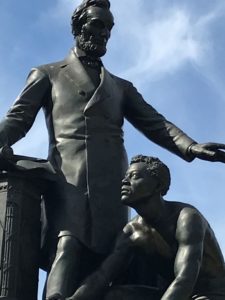 As part of my series on Confederate monuments I recently examined why the Robert E. Lee statue was removed from statuary hall in the Capitol. Not long after, the Emancipation Memorial featuring Abraham Lincoln was removed from a park in Boston. While not a Confederate monument, the Emancipation Memorial removal opens up a similar question: Why was it removed?
As part of my series on Confederate monuments I recently examined why the Robert E. Lee statue was removed from statuary hall in the Capitol. Not long after, the Emancipation Memorial featuring Abraham Lincoln was removed from a park in Boston. While not a Confederate monument, the Emancipation Memorial removal opens up a similar question: Why was it removed?
If you haven’t read the previous three post on Confederate monuments, the context begins with “The Rational Case for Removing Confederate Monuments.” Two subsequent posts looked at whether such removal “erases history” and whether “added context” was possible.
The Emancipation Memorial in Boston is a copy of the original statue by sculptor Thomas Ball erected in 1876 in what is now Lincoln Park, Washington, DC. The Lincoln Group of DC was involved in two teach-ins during the summer after the memorial was targeted by protesters hoping to tear it down. The DC statue currently remains in place. Prior to the teach-ins, in June of 2020, the Boston Arts Commission voted to remove the statue and place it in storage until some appropriate location capable of providing relevant context can be found. They agreed to have the statue removed before the end of the year, and that occurred in orderly fashion on December 27, 2020. The stated reasons were because of “the statue’s role in perpetuating harmful prejudices and obscuring the role of Black Americans in shaping the nation’s freedoms.”
For those not familiar with the statue itself, it was designed to commemorate the emancipation proclamation of Abraham Lincoln that called for enslaved people to be “henceforward and forever free.” An admirable action. So what is the problem?
I wrote about this in a previous post:
One aspect of that history that remains controversial today is the Freedman’s Memorial in Washington, DC. Often referred to as the “Emancipation Memorial” or “Freedom’s Memorial” or even “Lincoln and Emancipation,” the statue by sculptor Thomas Ball was erected in Lincoln Park east of the U.S. Capitol. It depicts Abraham Lincoln standing over an enslaved black man being released from his shackles and beginning the slow rise to equality. The face of the African American man represents that of a real person, Archer Alexander. Frederick Douglass was the keynote speaker at the 1876 dedication, which was also attended by President Ulysses S. Grant. Importantly, the funding of the statue was solely provided by freedmen (and women), with the first $5 donated by former slave Charlotte Scott of Virginia. While they didn’t have a say in the final design, the statue represents the efforts of African Americans to commemorate their emancipation from centuries of forced servitude.
Much of the controversy stems from the positioning of the figures, in particular the apparent subservient position of Archer Alexander. The original concept of Lincoln freeing the slaves and the depiction of now formerly enslaved men to rise seems to have been lost from current understanding. Another problem with today’s interpretation is the tendency to cherry pick from Frederick Douglass’s dedication speech, a wonderful oratory that delved into the complex relationships between Lincoln, Grant, former slaves, and the continuing struggle for equality. As the statue was being dedicated, so too was the Reconstruction period coming to an end. Whereas Reconstruction had guaranteed the rights of African Americans, the Jim Crow era that arose in response sought to destroy those rights. As W.E.B. Dubois said, “the slave went free; stood a brief moment in the sun; then moved back again toward slavery.” Alas, our long history of systemic racism continues to this day.
In addition to being paid for by former enslaved people and dedicated by Frederick Douglass, the statue was turned 180 degrees in the 1970s to present a pairing with the newly erected statue of African American civil rights activist and educator Mary McLeod Bethune. Despite this context, the design elements seem inappropriate to many in the modern era. In fact, new research discovered after the controversy erupted in the summer of 2020 showed that soon after dedicating it, Frederick Douglass opined in a newspaper advertisement that he thought the statue’s design could be improved by adding additional statues, e.g., African American leaders of the time.
Which is why a memorial dedicated to celebrating emancipation from slavery is the subject of reevaluation.
So how does this relate to the ongoing reevaluation of Confederate monuments? The Emancipation Memorial is obviously not a Confederate monument, but it does have design elements that can be interpreted as promoting white supremacy, notwithstanding the original intent. It highlights the issue presented in my original post, “The Rational Case for Removing Confederate Monuments,” in particular that modern interpretation is relevant to the discussion. Of course, also relevant is the context of the original funding and dedication, as well as the event depicted – emancipation from slavery.
The Boston Arts Commission, by whatever process they used, has determined that the statue should be removed from its place of prominence. So far the original statue in Washington, DC remains in place. Who is right? Is either right? That’s not a question that has a solid right or wrong answer. It is important that the Boston statue was removed after public input and removed respectfully and officially rather than by violent mob action or defacement. There is disagreement among historians as to whether the statue should remain. This is in contrast to Confederate monuments where there has been a noticeable shift in thinking toward removal, although not universally so.
All this highlights that a reevaluation of our memorialization history is necessary and appropriate. While the focus was originally on Confederate statues, there has been spillover into non-Confederate statues and school namings such as Lincoln, Grant, Washington, Jefferson, Columbus, and others. Each of these has a different set of issues to be evaluated, from each other and from Confederate statues. I’ll examine that issue more closely in future posts.
Follow me for updates on my Facebook author page and Goodreads.
David J. Kent is an avid science traveler and the author of Lincoln: The Man Who Saved America. His previous books include Tesla: The Wizard of Electricity and Edison: The Inventor of the Modern World and two specialty e-books: Nikola Tesla: Renewable Energy Ahead of Its Time and Abraham Lincoln and Nikola Tesla: Connected by Fate.
Like this:
Like Loading...
 If you follow my Facebook page (which you can do here if you don’t already), you may have already heard about my big news. For those who don’t (and why don’t you?), here is both the news and some additional info. Ready? BIG NEWS! I’m happy to announce that I have signed a contract with Rowman & Littlefield to publish my next Abraham Lincoln book.
If you follow my Facebook page (which you can do here if you don’t already), you may have already heard about my big news. For those who don’t (and why don’t you?), here is both the news and some additional info. Ready? BIG NEWS! I’m happy to announce that I have signed a contract with Rowman & Littlefield to publish my next Abraham Lincoln book.


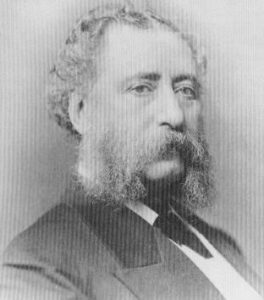 On January 25, 1865, Abraham Lincoln
On January 25, 1865, Abraham Lincoln 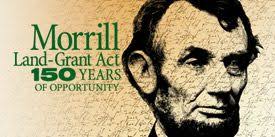 Abraham Lincoln is responsible for the creation of Historically Black Colleges and Universities (HBCUs). At least indirectly.
Abraham Lincoln is responsible for the creation of Historically Black Colleges and Universities (HBCUs). At least indirectly.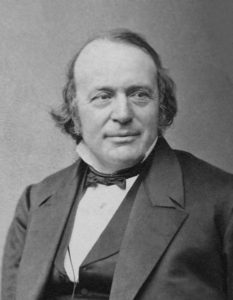 Louis Agassiz arrived at the White House on January 15, 1865 with Massachusetts Congressman Samuel Hooper. The famous scientist would have his one and only meeting with Abraham Lincoln. While the two influential men had never met before, Hooper was well-known to Lincoln. It was Hooper’s home in Washington DC that George McClellan had used as headquarters when he commanded the Union army. Hooper was also briefly the father-in-law of Charles Sumner, who had married Hooper’s daughter but divorced after only a short marriage. Today, however, the focus was on Agassiz.
Louis Agassiz arrived at the White House on January 15, 1865 with Massachusetts Congressman Samuel Hooper. The famous scientist would have his one and only meeting with Abraham Lincoln. While the two influential men had never met before, Hooper was well-known to Lincoln. It was Hooper’s home in Washington DC that George McClellan had used as headquarters when he commanded the Union army. Hooper was also briefly the father-in-law of Charles Sumner, who had married Hooper’s daughter but divorced after only a short marriage. Today, however, the focus was on Agassiz.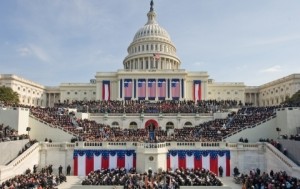 The election results were decisive. The new president-elect had won the popular vote by a substantial margin and had won more electoral votes than his competitors combined. The election had been secure, and the results were unequivocal.
The election results were decisive. The new president-elect had won the popular vote by a substantial margin and had won more electoral votes than his competitors combined. The election had been secure, and the results were unequivocal.
 As part of my series on Confederate monuments I recently examined
As part of my series on Confederate monuments I recently examined  Heck of a year, wasn’t it? I’m sure I’m not alone in admitting that the year in a writer’s life didn’t go exactly as planned. And yet, looking back on
Heck of a year, wasn’t it? I’m sure I’m not alone in admitting that the year in a writer’s life didn’t go exactly as planned. And yet, looking back on 
 Given COVID, the election, the post-election, and everything else that happened this year, it should come as no surprise that my Abraham Lincoln book acquisition pattern was different that in previous years. While last year I had a big jump in the number of new Lincoln books I acquired (
Given COVID, the election, the post-election, and everything else that happened this year, it should come as no surprise that my Abraham Lincoln book acquisition pattern was different that in previous years. While last year I had a big jump in the number of new Lincoln books I acquired (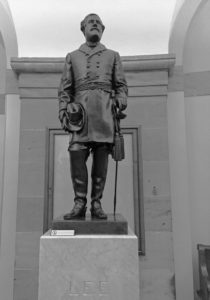 Virginians woke up Monday morning, December 21, 2020, to the
Virginians woke up Monday morning, December 21, 2020, to the 






